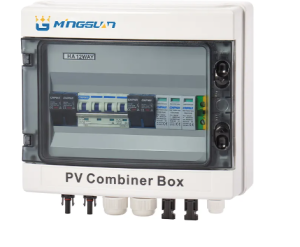While plastic waterproof boxes are made to keep out moisture, dust and other environmental stuff, can these containers handle things like extreme heat or freezing temperatures as well as strong storms? Well, to answer this question you need to look at the materials used and their specifications first and most importantly how these boxes behave in an actual setting.
Sustaining low and high temperatures, a good plastic waterproof box bolsters both of these properties as well (especially if fabricated with strong polyethylene or polypropylene). Polypropylene melts at roughly 160°C, while polyethylene doesn't decompose until -50°C and companies like Pelican and OtterBox have put their products through brutal tests for weather. Pelican even suggests its cases are certified to withstand temperatures of -40°F (-40°C) to 210°F (99°C), so they're perfect for any climate and weather.
Apart from thermal resistance, the box has to resist high-impact abbey there are many storm hit or heavy winds blow it. Plastic materials such as polyethylene and polypropylene can absorb large amounts of impact forces without cracking,Research By the International Association of Impact Engineers. That's also presumably why many waterproof boxes designed for military and industrial applications are made to these specifications. The designer cited that local emergency services in New Orleans stored essential equipment needed during hurricanes, such as Hurricane Katrina, in plastic waterproof boxes. These boxes withstood high winds and flooding to protect what was inside them.

The style and also closed system of a plastic waterproof box are likewise very important for it to function efficiently. The seals, usually rubber or silicone based, seal the lid and form an air-tight water-tight cavity. One of the big players in waterproof boxes, OtterBox, employs a patented system of seals tested to ISO 2880 standards for severe weather resistance. OtterBox says its products can survive freezing temps through high UV exposure without breaking down.
Ingress protection (IP) rating is one of the most crucial aspects of a waterproof box. The IP rating is used to indicate how well the box resists water and dust. This means, for example, a box that is IP67 can be immersed in water at 1 meter depth for up to 30 mins. This rating is important for weatherproofing in outdoor environments. Most waterproof boxes have been tested and certified for rain, snow and dust storm exposure and can be deployed to outside areas experiencing extreme weather patterns.
Also relevant, the duration of a plastic waterproof box is of a extreme weather condition. Numerous manufacturers provide warranties that promise their products are designed to withstand the elements for an extended period of time. Warranties usually range from 1 to 5 years, subject to the make and model. The latter might be a trivial example, but Pelican cases come with a lifetime warranty — the only way to justify this kind of guarantee is if you know your products will survive more than the average harsh conditions, for a considerable number of years.
At the end of the day, a plastic waterproof box built well can indeed withstand extreme weather conditions — but should be chosen based on what you plan to store. However, when they are subjected to extreme temperatures, high impact, or severe environmental factors, these boxes can fail if you do not buy the right one that is made from a high quality box such as polyethylene or polypropylene with a good IP rating. Plastic Waterproof Box is one such product that delivers reliable protection for sensitive equipment against features like high winds, extreme cold, and blistering heat.